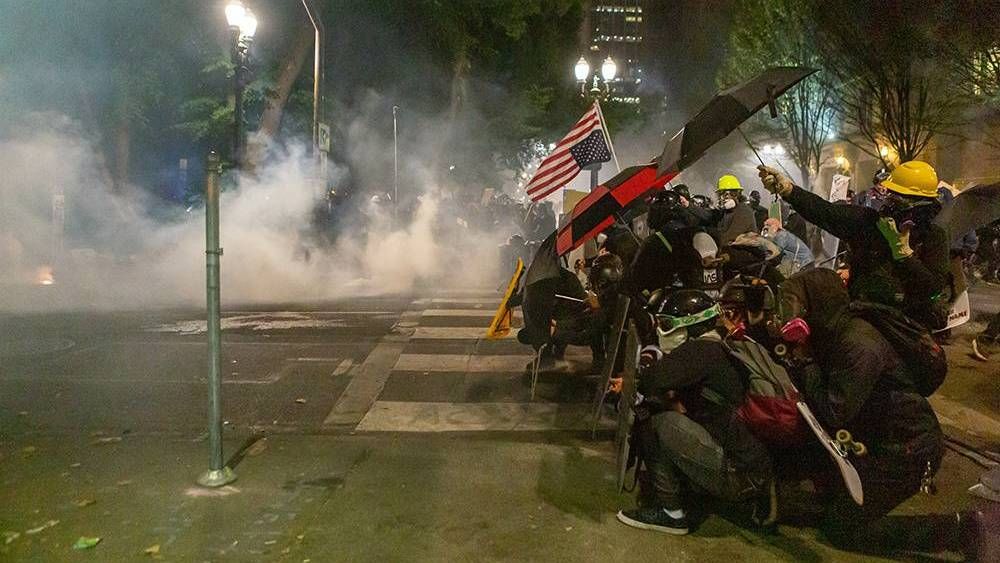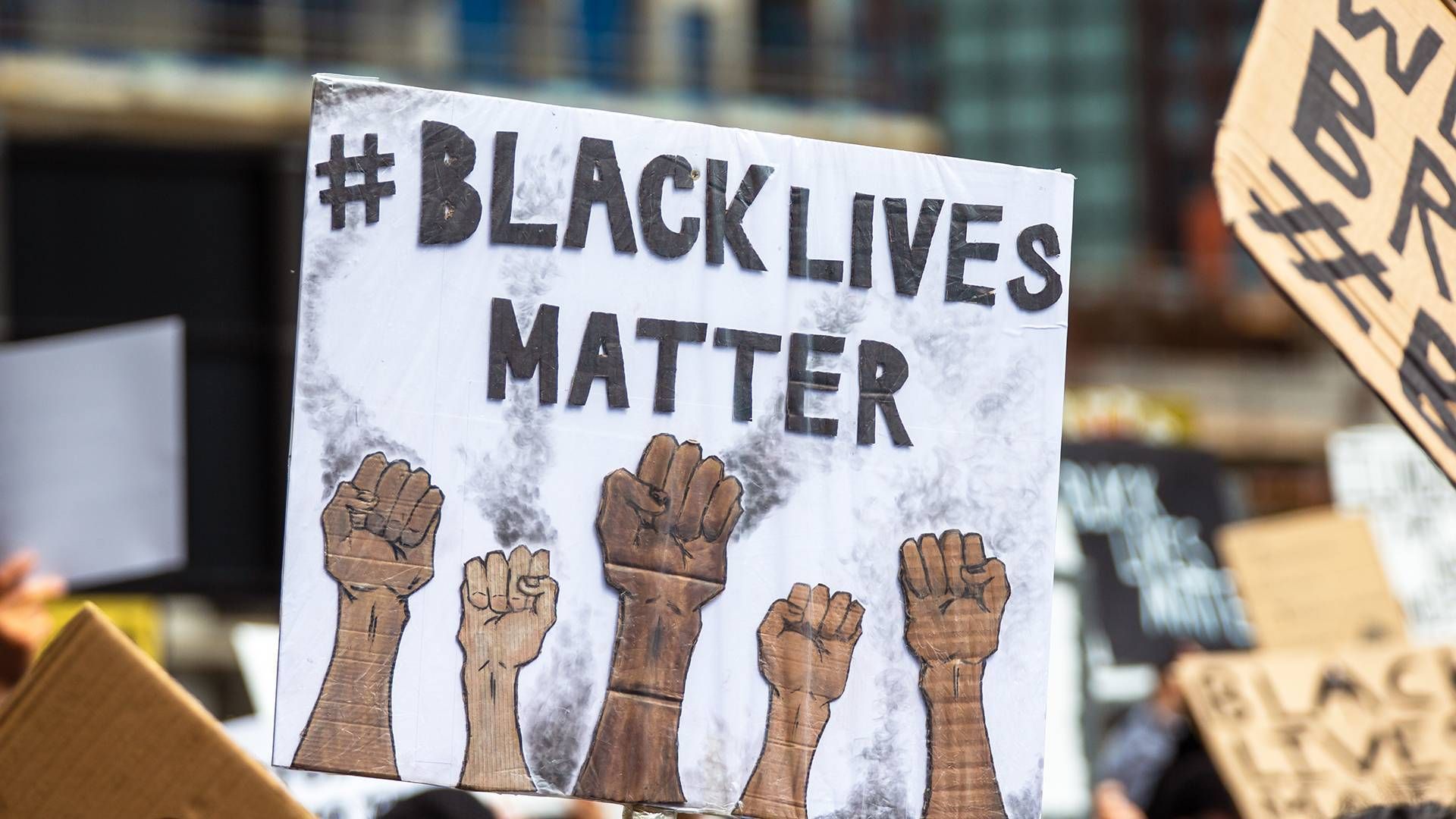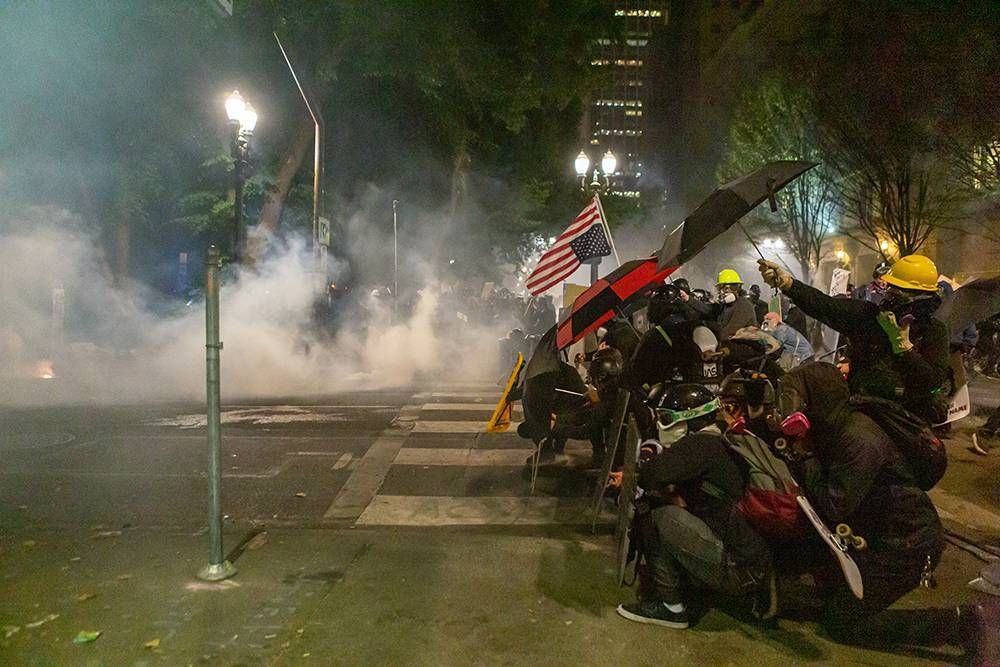How Emergency Powers Pave the Way for Police Brutality at Protests
'Police have this incredible discretion and a lot of tools and a lot of manpower and weaponry to respond in a very aggressive way.'


This article originally appeared on Rewire.
When curfew hit at 8 pm on April 13 in Brooklyn Center, Minn., it felt like someone had flipped a switch.
Reporters on the ground say the protest outside the police department had been peaceful, full of speeches and songs.
But the environment quickly changed as law enforcement began to use more aggressive tactics, firing less-lethal rounds, tear gas and flash grenades at protesters in an attempt to disperse the protest.
Minnesota Governor Tim Walz had earlier declared a peacetime emergency in seven counties. He characterized his response in a press conference as the "largest police presence in Minnesota history."
It has been criticized by residents, though, who say it feels like a military occupation. Brooklyn Center residents living near the protest site were even gassed in their homes.
It follows a familiar formula to many racial justice protests in recent history. A state of emergency is called. A curfew is instated. And the folks who continue to exercise their right to protest are met with violence and a large, militarized police presence.
We saw this during 2014 protests in Ferguson, Missouri, after the police killing of Michael Brown. We saw it in 2016 during protests at the site of the Dakota Access Pipeline. And we saw it last summer in Minneapolis during protests after the police killing of George Floyd.
An aggressive police presence doesn't have to start with a state of emergency and local curfew.
Emergency powers don't, on their own, denote abuse.
But the way they're enacted can vary drastically based on the assessment of the threat at hand. Often, emergency powers and curfews are enacted in a way that paves the way for, if not endorses, police brutality at protests.
"Studies tell us that police are more likely to view activists of color and left-leaning activists as being threatening and as being dangerous," said Karen Pita Loor, the associate dean for experiential education and clinical associate professor of law at the Boston University School of Law.
Emergency powers are flexibility to respond
When a state of emergency is in place, the enactor, whether that's the governor or mayor, becomes the commander-in-chief, in a sense. They decide how to carry out the powers.
"Police have this incredible discretion and a lot of tools and a lot of manpower and weaponry to respond in a very aggressive way," Loor said.
"They are the ones that are providing the governor with information about what the threat is and whether a state of emergency is warranted. And how that state of emergency should proceed."
Emergency powers have roots not in protest management, but for times like natural disasters and war.
The emergency power laws we're seeing enacted during these protests are the same ones we see in use during the COVID-19 pandemic, snowstorms and floods.

"We've had emergency powers for as long as we've had constitutions, i.e., for thousands of years," said Nomi Claire Lazar, associate professor in the Graduate School of Public and International Affairs at the University of Ottawa and author of States of Emergency in Liberal Democracies.
"Constitutions are ways of dividing up political powers on one hand and immunities against those powers on the other hand."
But in an emergency, the day-to-day checks and balances that come with a constitution can slow down response and even further disaster.
Emergency powers, then, provide built-in flexibility to respond however is necessary.
"These allow a state to concentrate power and derogate rights in urgent situations which threaten the public on a large scale," Lazar said.
"One way to think about this is that in an emergency, the state can't fulfill its usual public duties without our help (we help by staying home to prevent disease spread, we help by sandbagging in a flood, we help by lending a factory for munitions manufacture), and emergency powers allow the state to command our help."
Fourth amendment rights challenged
Emergency powers do not suspend the constitution. While most state statutes don't have any sort of provision preserving individual rights during an emergency, we still have the same rights during a state of emergency that we do on a typical day.
By the Fourth Amendment, we should still be protected against unreasonable search and seizure.
But the checks to make sure this happens don't always hold up. In 1989, Supreme Court case Graham v. Connor defined an "objective reasonableness" standard for law enforcement conduct, which points out that police are forced to make split-second judgements.
The standard has been cited in multiple police killings since, such as the shootings of Michael Brown, Jamar Clark and Philando Castile. It makes it difficult to hold police accountable in excessive force cases through the Fourth Amendment.
Often, lawsuits claiming police unlawfully arrested protesters are dismissed because of qualified immunity, which protects officers from lawsuits except in cases of incompetence. Officers are protected because they can say they suspected criminal activity.
"Basically, what the courts are doing is they're ignoring the fact that the underlying conduct that the victim of the police violence is engaging in is expressive political activity," Loor said.
"The underlying conduct is not that they're criminal suspects. The underlying conduct is that they're actually protestors, which we are supposed to value as a society and also supposed to protect."
Loor believes courts should be recognizing the expressive portion of the Fourth Amendment — which has been applied to searches of books and papers — when it comes to protest activity.
Military and police lines blurred
This month Walz, the Minnesota governor, deployed 3,000 National Guard troops on the ground in the metro area as part of his public safety initiative, Operation Safety Net. That's in addition to 1,000 law enforcement officers and state patrol.
But there doesn't need to be a state of emergency for police to respond to protests in huge numbers. Mutual aid agreements between police departments already make that possible.
And while curfews make it easier for police to arrest protesters, they already have arrest tactics at their disposal that allow them to arrest protesters for nonviolent conduct, including mass arrests for failure to disperse. Even journalists have been arrested simply for possessing gas masks to protect themselves from tear gas.
These arrests often aren't prosecuted. But they can be violent.
There has been concern over military use of force at protests since at least the Kent State massacre in 1970, when soldiers shot and killed four students and wounded nine during an anti-war protest.
After the shootings, National Guard forces moved toward less-lethal weapons like rubber bullets, which are still in use today. But despite being labeled "less lethal," rubber bullets can still seriously injure, even kill protesters.
In 1878, The Posse Comitatus Act was passed to prevent the federal military from engaging in law enforcement activity. There was a desire for the military and law enforcement to be separate entities.
"They're supposed to keep the peace, prevent disturbances, quell disorder, but not enforce the law. That's for the cops," said William Banks, professor emeritus at the Syracuse University College of Law.
But states aren't burdened by that restriction.
"If the governor wishes, depending on how the state law is written, National Guard forces could enforce the curfew or engage in a search or make an arrest of an individual who's violating the law," Banks said.
In the past 20 years, the lines have further blurred. That's because military-grade force doesn't just come from the military.
Since 1997, federal programs have transferred surplus military equipment to local police departments. Police departments often respond to protests in full tactical military gear, with gas masks, shields and armored vehicles.
For instance, as NPR reported, St. Paul suburb Cottage Grove's police department alone acquired $1 million in military gear during the Trump administration. The department received 39 bayonets in December 2019.
"That kind of a force, particularly if it's made distant from the people by virtue of the equipment that they use and the paraphernalia that they wear, and the rules of engagement that follow, they're no longer being responsive to the people," Banks said.
"It's about accountability and transparency."
'Never stop questioning'
Public officials never have all the information during a fast-moving situation. But they have an incentive to overreact, to appear as if they are maintaining order and safety.
"Especially in cases where it's 'our' safety and 'their' rights, where the benefits accrue to the majority and the costs fall on a minority, there is a strong incentive for political leaders to overreact so that they are 'seen' to be taking the matter in hand," Lazar said.
Some states, like Minnesota, have sunset clauses which require governors to renew their emergency power monthly. This provides some accountability.
"It's imperative that we never stop talking about the ethics behind emergency powers, never stop questioning, judging and rejudging emergency action," Lazar said.
"That much more so because at such moments, citizens become doubly vulnerable, both because of the emergency itself and because of (rights derogating) mechanisms for addressing it."
Loor and Lazar said it's important to differentiate between emergencies like a flood or pandemic, and a popular uprising against discrimination.
"Really, we have people's civil rights at stake," Loor said.

This story is part of the digital storytelling project Racism Unveiled, which is funded by grants from the Otto Bremer Trust and HealthPartners.
For the first time in 27 years, most Americans surveyed by Gallup do not trust the police. A separate Gallup poll, also cited in a Minnesota report, found that only 19% of Black adults now trust the police. Over-policing, racial profiling and excessive force factor into that distrust. And while most Black Minnesotans surveyed want public safety reforms, white supremacy remains an issue.
With media outlets from all across the globe descending on Minneapolis during the trial of Derek Chauvin for killing George Floyd, we wondered: How has the media perpetuated racism when covering communities of color? And how do Black media organizations handle reporting on community differently?
The Chauvin trial has stirred up a tidal wave of trauma in Minnesota’s communities of color for whom racialized trauma is already a daily experience. So we talked to author and therapist Resmaa Menakem, who shares five ways that people can take care of themselves during the trial.
